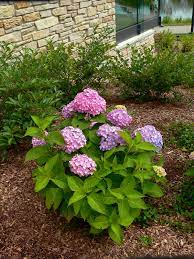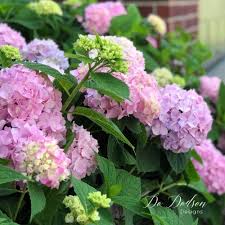Hydrangeas are beloved flowering shrubs, known for their lush, colorful blooms that brighten up any garden. However, without proper pruning, these plants can become overgrown, resulting in fewer flowers and a less healthy appearance. While pruning may seem straightforward, different types of hydrangeas require specific techniques to thrive.
If you’re unsure how to prune your hydrangeas, don’t worry—this guide will walk you through the essential steps, helping you identify your plant type and prune it the right way for optimal results.
Step 1: Identify Your Hydrangea Type
Understanding the type of hydrangea you have is crucial, as each variety requires a tailored pruning approach. The four primary types are:
- Mophead (Hydrangea macrophylla): Known for their large, round flower clusters.
- Lacecap (Hydrangea macrophylla): Feature flat, delicate blooms with a central cluster of tiny flowers.
- Panicle (Hydrangea paniculata): Produce cone-shaped flowers that bloom on new wood.
- Smooth (Hydrangea arborescens): Have rounded blooms and grow on new wood.
Incorrect pruning can result in removing necessary buds or flowers, so ensure you correctly identify your plant before starting.

Step 2: Remove Dead, Damaged, or Diseased Wood
Using sharp pruning shears, cut away any dead, damaged, or diseased branches. This step improves air circulation and prevents the spread of disease, promoting a healthier plant overall.
Step 3: Remove Old Wood (When Applicable)
- Mophead and Lacecap Hydrangeas: Remove old wood that is more than three years old to encourage fresh growth and increased blooms.
- Panicle Hydrangeas: These can tolerate more aggressive pruning; remove up to half of the previous year’s growth to stimulate flowering.
For smooth hydrangeas, focus on removing weak or spindly stems to make way for stronger growth.
Step 4: Cut Back to Healthy Buds
When trimming stems, always cut just above a healthy pair of buds, leaving at least two pairs per stem. This encourages new growth and abundant flowering. Ensure your cuts are made at a 45-degree angle to prevent water pooling, which can lead to rot.
Step 5: Avoid Over-Pruning
Excessive pruning can harm the plant, reducing its ability to flower. Limit pruning to about one-third of the plant’s total growth per year.
Additional Tips for Pruning Success
- Timing Matters: Prune in late winter or early spring, before new growth begins.
- Use the Right Tools: Sharp, clean pruning shears ensure precise cuts and reduce the risk of disease.
- When in Doubt: If you’re unsure of your hydrangea type, wait until after it blooms to prune. This ensures you don’t remove essential buds.
By following these steps, your hydrangeas will stay healthy, vibrant, and full of blooms, enhancing the beauty of your garden for years to come. With a little care and attention, you can master the art of pruning and enjoy the rewards of a flourishing plant.
Happy gardening!
